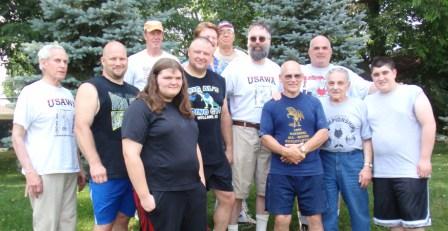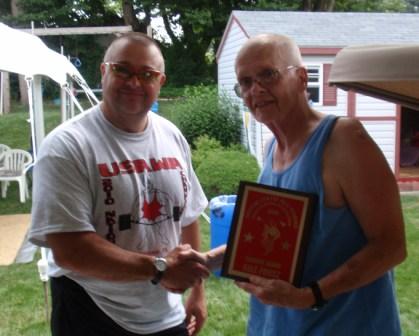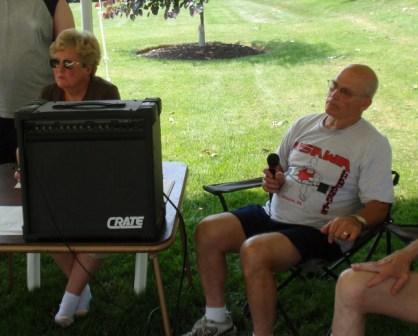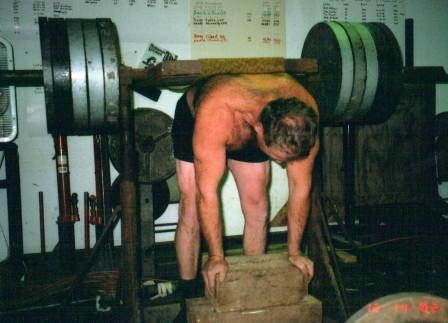Minutes of the 2010 Annual National Meeting
by Al Myers, USAWA Secretary
The 2010 Annual National Meeting of the USAWA was called to order by President Denny Habecker following the first day of competition on Saturday afternoon. Roll call was done by Secretary Al Myers with these members in attendance: Denny Habecker, Al Myers, Judy Habecker, Randy Smith, Kohl Hess, Art Montini, Chad Ullom, Scott Schmidt, Dale Friesz, Barry Bryan, Frank Ciavattone Jr., Frank Ciavattone III, and Dennis Mitchell. The reading of the previous meetings minutes was done by Secretary Al Myers. The financial report was next given by Treasurer Al Myers. The report from the Official’s Chairman Joe Garcia and Records Chairman Joe Garcia was not available to be provided to the membership, so no report was given. The Website Director Al Myers gave a report on the development of the new website and how it will be beneficial to the USAWA in the future. Next agenda item was the discussion and vote on the new proposed bylaws developed by the ad hoc committee of Al Myers, Joe Garcia, and Tim Piper. The committee had previously provided these bylaws to the membership for review, so the membership was aware of the contents before the meeting. After a brief discussion, Chad Ullom moved to accept them, Dale Friesz provide the second, and the acceptance of the new bylaws passed by an unanimous vote. Next item brought to the meeting floor was a discussion of the minimum age of officials. No minimum age is specified in the USAWA Rule Book. After much discussion, the membership agreed that the age of 16 should be this minimum age. Denny Habecker moved, Dale provided a second, and the motion passed unanimously. Dale Friesz brought up the discussion of the USAWA providing a Handicap Division, to provide a division for those to compete in that have a disability. Most everyone in attendance agreed this was a good idea, but disagreements arose in how we as an organization would assess disabilities. Denny moved that this be looked into by the Executive Board, and a Handicap Division be implemented by the Executive Board when the board is in unanimous agreement on the specifics. Frank Ciavattone III gave a second, and the motion passed by unanimous vote. The Hall of Fame committee that was formed at last year’s meeting of Denny Habecker, Dale Friesz, and Dennis Mitchell gave their report next. The committee proposed that induction occur when an athlete achieves 10 National Championships. Also, in this was the development of a “contributor” Hall of Fame. Discussion against this proposal included the argument that it doesn’t reward individuals that contribute to the USAWA in other ways besides just competing. Those in favor stressed that this proposal would be very simple to keep track of lifter’s progress toward the Hall of Fame, without having to keep track of points. Al Myers moved that the Executive re-evaluate the point system, make some modifications with it, and when every member of the Executive Board is in agreement, it be implemented immediately. Chad Ullom put forth the second, and the motion passed unanimously. At this point, Dale Friesz nominated Scott Schmidt for the Hall of Fame as he had already met the previous criteria to be in the Hall of Fame. Chad Ullom seconded the motion, and it passed by unanimous decision. It was agreed that the ceremonial induction of Scott Schmidt into the USAWA Hall of Fame will occur in November at the Gold Cup. The next agenda item was the approval of 5 new lifts that have been proposed which were: the chin up, the pull up, the foot press, the turkish get-up, and the bent-over row. After a short discussion, a vote was taken and these lifts were passed by unanimous vote. Next up was the approval of the Rulebook changes. Al Myers presented a list of proposed changes, most of which were small technical issues involving rules of the lifts that were omitted in the current Rulebook. Everyone was in agreement on these. The only significant issue included in this was placing an expiration on Level 1 test approved officials in which a 3 year limit will be placed on officials before being required to pass the Rules Test again. Level 2 officials and Level 1 experience approved officials are exempt from this. Chad Ullom moved to accept these Rulebook changes, Randy Smith seconded the motion, and it passed unanimously. At this point, discussion arose about allowing knee wraps for the front squat and the 12″ base squat. The argument for this was that knee wraps have already been approved by the membership for these two lifts at the 1997 meeting, but never implemented in the Rulebook. Scott Schmidt moved that we allow knee wraps for these two lifts and this be put in the Rulebook. Randy Smith seconded it, and the motion failed by a vote of 7 to 4. Discussion resumed and it was brought to the membership’s attention that several records in the Record List for these two lifts were done with knee wraps since it was previously approved and it would be impossible now to determine which ones were set with them. Scott Schmidt again moved that knee wraps be allowed in these two lifts, Chad Ullom provided a second, and the motion passed by a vote of 10 to 2. The next agenda item was presenting the Special Awards. Al Myers and Denny Habecker presented the awards. The Award recipients are as follows: Athlete of the Year – Al Myers, Athlete of the Year Runner Up – Chad Ullom, Leadership Award – Bill Clark, Leadership Award Runner Up – Al Myers, Sportsmanship Award – Denny Habecker, Sportsmanship Award Runner Up – Art Montini, Courage Award – Dale Friesz, Courage Award Runner Up – Frank Ciavattone, Newcomer Award – David Glasgow, Newcomer Award Runner Up – Kohl Hess, Club of the Year – Dino Gym, Club of the Year Runner Up – Ambridge VFW BBC. The next agenda item was the election of two Executive Board members to a one year position. Al Myers nominated Dennis Mitchell and Chad Ullom nominated Scott Schmidt. Randy Smith moved that nominations be ceased and the nominees accepted by unanimous ballot. Randy’s motion created confusion amongst the membership in his use of proper parliamentary procedure and after an uncomfortable period of silence, a second was made by Al Myers. A vote was then taken and it passed unanimously. Next up was the appointment of a Drug Enforcement Director for the USAWA. Al Myers nominated Chad Ullom. There were no other nominations, and it passed unanimously. The appointment of an Awards Director for the USAWA was the next agenda item. Chad Ullom nominated Al Myers, and again there were no other nominations. A vote was taken and it passed unanimously. The last agenda item was accepting bids for next year’s National Championships. Only one bid was presented, and that bid was from Thom Van Vleck of the JWC. Al Myers presented the bid on Thom’s behalf and gave a persuasive speech to the membership on how “great a guy Thom is”. A vote was taken and the bid was accepted by majority vote, with only one vote against. At this point and 2 1/2 hours later, the membership was beginning to become restless and more interested in the huge sandwiches that Judy had prepared for us. Scott Schmidt moved to adjourn the meeting, with Chad Ullom providing a second, and the vote passed unanimously.



